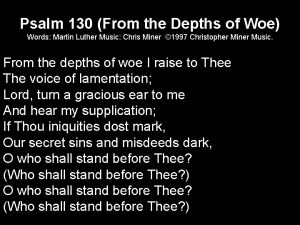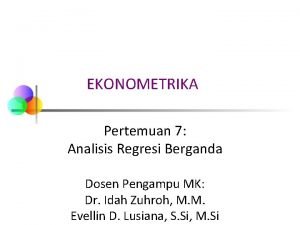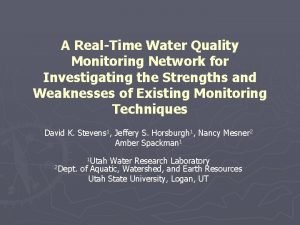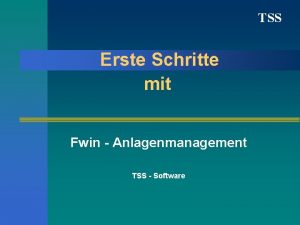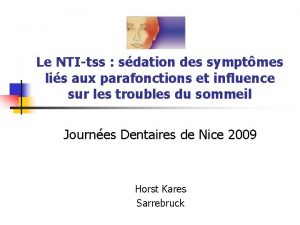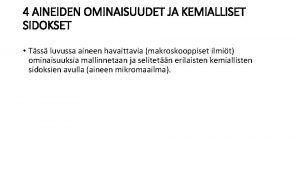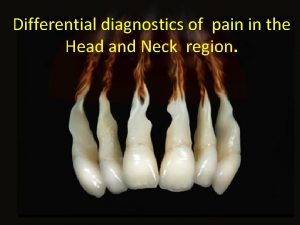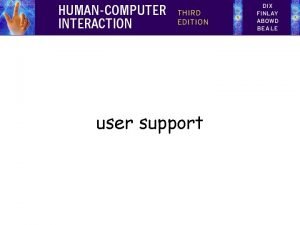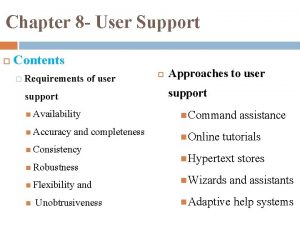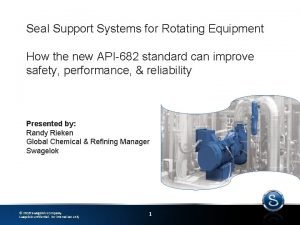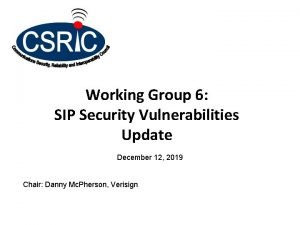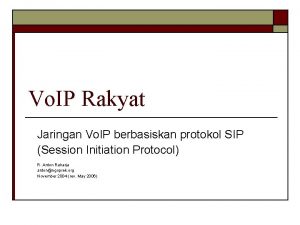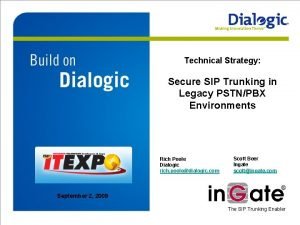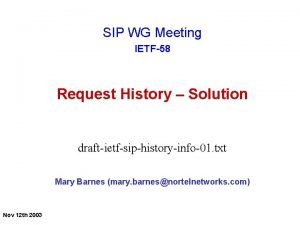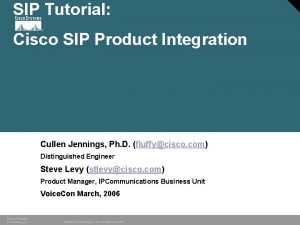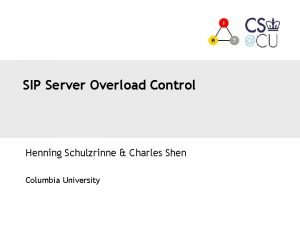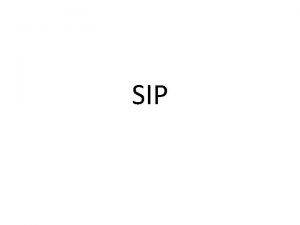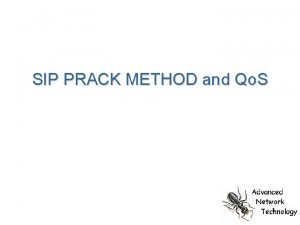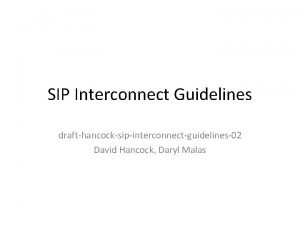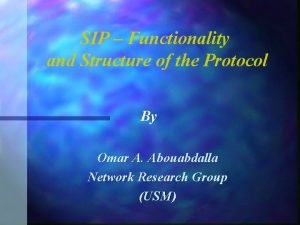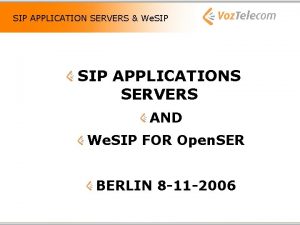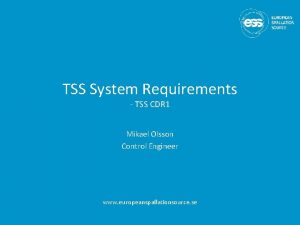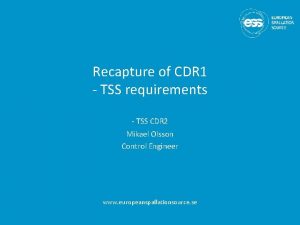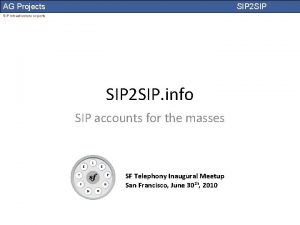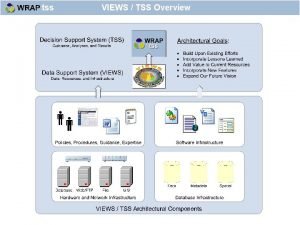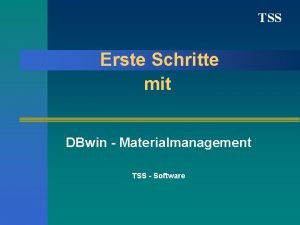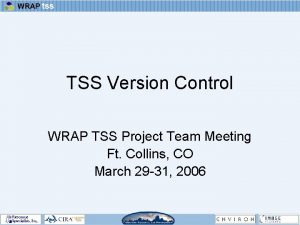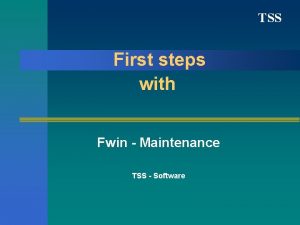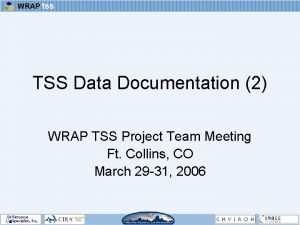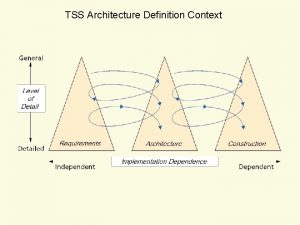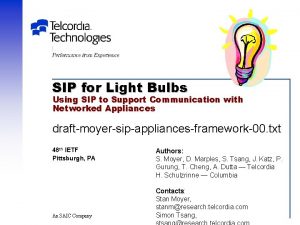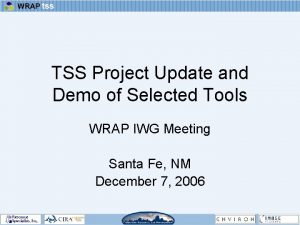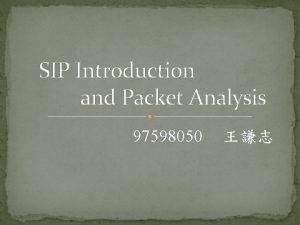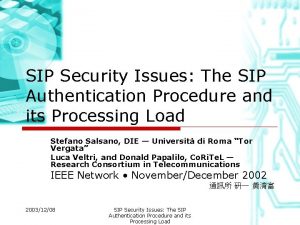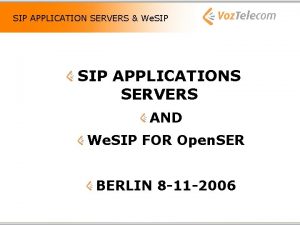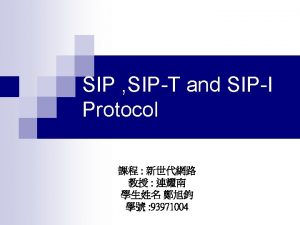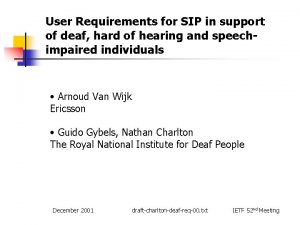TSS Tools to Support SIP Requirements and WOE




































- Slides: 36

TSS Tools to Support SIP Requirements and WOE Analyses WRAP TSS Project Team Meeting Ft. Collins, CO March 29 -31, 2006

TSS Tools and SIP Requirements • TSS tools designed to: – Produce specific products required in SIPs – Provide for independent investigation of TSS data sets and support an overall understanding of visibility issues, while not necessarily fitting into the SIP outline • Review of product requirements: – IWG SIP outline (Fall 2005) – Tom Moore (TM) Technical Support System Background Document (March 2006) • Sample products for discussion

IWG SIP Outline (Fall 2005) • Items in red are/will be directly supported by the TSS • The IWG SIP Outline has been modified since Fall 2005, but these products are still required • IWG will have opportunity to comment at April 27 training

TSS Background Doc – Tom Moore

Regional Analysis Results • Regional overview of monitoring, modeling, and emissions data supports: – IWG: not specified, sec. 4. x – TM: bullets 5 and 8 • Regional overview of attribution results supports: – IWG: sec. 2. 3. 1 and 2. 3. 2 – TM: bullets 16 and 17 • Regional WOE analyses will support regional understanding of how emissions changes affect visibility changes

Class I Area Analysis Tools (1) • Metadata Browser provides site information/maps to support: – IWG: sec. 1. 2 – TM: not specified • Analysis Browser (regional and Class I area “static”) supports: – IWG: sec. 2. 6. 1 – TM: bullets 11, 12, 14, 15, 16, 17 – Also allows for review of model performance • Data Query Wizard supports: – User direct download of data types • Trends Tool supports: – IWG: sec. 2. 6. 1 (WOE analysis; e. g. , sulfate/nitrate trends) – TM: bullet 15

Class I Area Analysis Tools (2) • Composition Tool supports: – IWG: sec. 2. 2. 1, 2. 2. 2, 4. x (2. 4 – emissions by pollutant? ) – TM: bullets 1, 2, 3, 4 • Data Browser supports: – IWG: sec. 2. 2. 3, 4. x – TM: bullets 11, 12, 14, 15 • Offsite Resources support: – Additional contextual information, particularly in terms of GIS layers – Will be used in general understanding of visibility and emissions either regionally or locally

Monitoring Data Displays • Regional (map) displays of monitoring data summaries • Long-term trends – Regional – Class I areas (by species) • Mass/Extinction distributions (log-log scale? ) • Timelines for Class I areas – Extinction parameters – Other parameters • Aerosol vs. nephelometer comparisons (where available)

Baseline Extinction: 20% Worst Days

Baseline Nitrate: 20% Worst Days

Long-term Trends 8 -yr Trends 16 -yr Trends

Class I Area Trends, 20% Worst Days 16 -yr decrease in Bext 8 -yr decrease in SO 4

Distribution of Monitored Sulfate

Distribution of Measured Nitrate

Data Timelines

Chloride/Chlorine Mass Timelines Baseline2004: median UNC ~ 0. 04�. 006; median MDL ~ 0. 07�. 01 Baseline: median UNC ~ <0. 001; median MDL ~ 0. 001

Aerosol vs. Nephelometer Scattering

Modeling Data Displays • Many Monitoring data displays will also work for Modeling data • Model performance – 20% worst days and average (extinction) – Time series of model/monitoring data (extinction) • Model response (2002 to 2018) – 20% worst days and average (extinction) – Change in distribution (mass)

2002 Model Performance

Hells Canyon, OR/ID 2002 IMPROVE Data 2002 Model Results

2018 -2002 Model Change

Distribution of Modeled Nitrate

Distribution of Modeled OM

Emissions Data Displays • Summary charts – Total for WRAP region (bar chart/table) – WRAP region broken down by state (bar chart/table) – Individual states (bar charts/tables) • Summary maps – Gridded and county level emissions – Extent of map defined by user – Ability to sum emissions over selected areas

Total WRAP Region SO 2 and NOx Emissions (2002, 2018, and difference)

Anthropogenic and Natural NOx Emissions by State (Plan 02)

Regional NOx Emissions – All Sources

Attribution/Integrated Data Displays • Glide slopes – RHR required, by deciview – Glide slopes for individual species with estimated source emissions • Attribution results – Which source regions affect each Class I area? – Which Class I areas does each state impact? • Determination of important source emission regions

RHR Glide Path for Agua Tibia, CA

Worst Day Impacts and Sources Inter-Annual Baseline Variability (Mm -1) Baseline Measurement Uncertainty (Mm-1)

Class I Area Attribution by Source Region

Contributing Source Regions Determined by Back Trajectory Residence Times

Worst Day Impacts and Sources Inter-Annual Baseline Variability (Mm -1) Baseline Measurement Uncertainty (Mm-1)

Class I Area Attribution by Source Region

Contributing Source Regions Determined by Back Trajectory Residence Times

Class I Area Extinction Attributed to States Sulfate/nitrate extinction at Class I areas attributed to Oregon emissions Sulfate/nitrate extinction at Class I areas attributed to Arizona emissions
 Ibm technical support number
Ibm technical support number Blackest face of woe
Blackest face of woe First woe
First woe From the depths of woe
From the depths of woe Woe unto you when your king is a child
Woe unto you when your king is a child Tss met 40
Tss met 40 Rss/tss
Rss/tss Tss vs turbidity
Tss vs turbidity Anlagenmanagement software
Anlagenmanagement software Ntitss
Ntitss Alkuainemolekyyli
Alkuainemolekyyli Tss of heavy tomato puree
Tss of heavy tomato puree Nti tss
Nti tss Signal word
Signal word User support examples
User support examples Approaches to user support
Approaches to user support Swagelok mechanical seal support systems
Swagelok mechanical seal support systems Requirements management tools
Requirements management tools Creativity support tools
Creativity support tools Application support tools
Application support tools Marking tools in sewing
Marking tools in sewing Swot analysis for school improvement plan
Swot analysis for school improvement plan Sip security vulnerabilities
Sip security vulnerabilities Berikut format alamat sip yang benar adalah
Berikut format alamat sip yang benar adalah Verizon ip centrex
Verizon ip centrex Sip trunking poole
Sip trunking poole History-info sip header
History-info sip header History-info sip header
History-info sip header Cullen jennings
Cullen jennings Slidesvo
Slidesvo Sip security issues
Sip security issues Qu es
Qu es Sip prack message example
Sip prack message example Sip interconnect
Sip interconnect Sip protocol structure
Sip protocol structure Sip forking
Sip forking Sip application server
Sip application server



